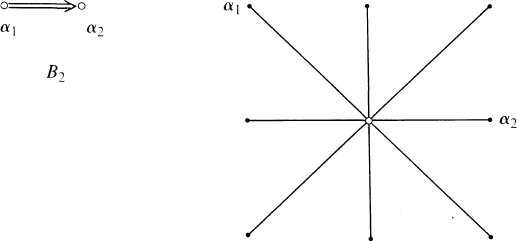Published online by Cambridge University Press: 20 November 2018
In [10] Patera and Sharp conceived a new relation, subjoining, between semisimple Lie algebras. Our objective in this paper is twofold. Firstly, to lay down a mathematical formalization of this concept for arbitrary Lie algebras. Secondly, to give a complete classification of all maximal subjoinings between Lie algebras of the same rank, of which many examples were already known to the above authors.
The notion of subjoining is a generalization of the subalgebra relation between Lie algebras. To give an intuitive idea of what is involved we take a simple example. Suppose  is a complex simple Lie algebra of type B2. Let
is a complex simple Lie algebra of type B2. Let  be a Cartan subalgebra of
be a Cartan subalgebra of  and Δ the corresponding root system. We have the standard root diagram
and Δ the corresponding root system. We have the standard root diagram

Inside B2 there lies the subalgebra A1 × A1 which can be identified with the sum of  and the root spaces corresponding to the long roots of B2.
and the root spaces corresponding to the long roots of B2.